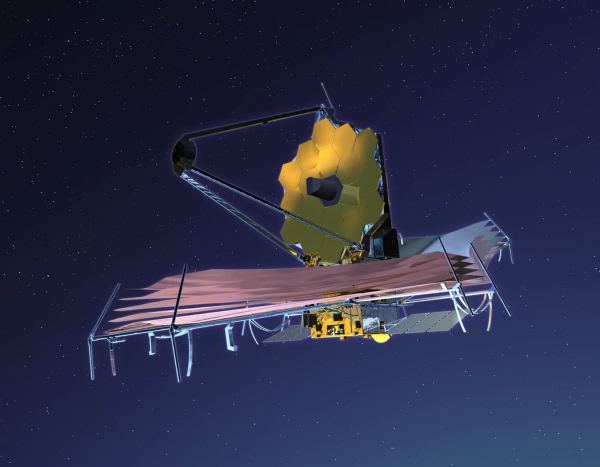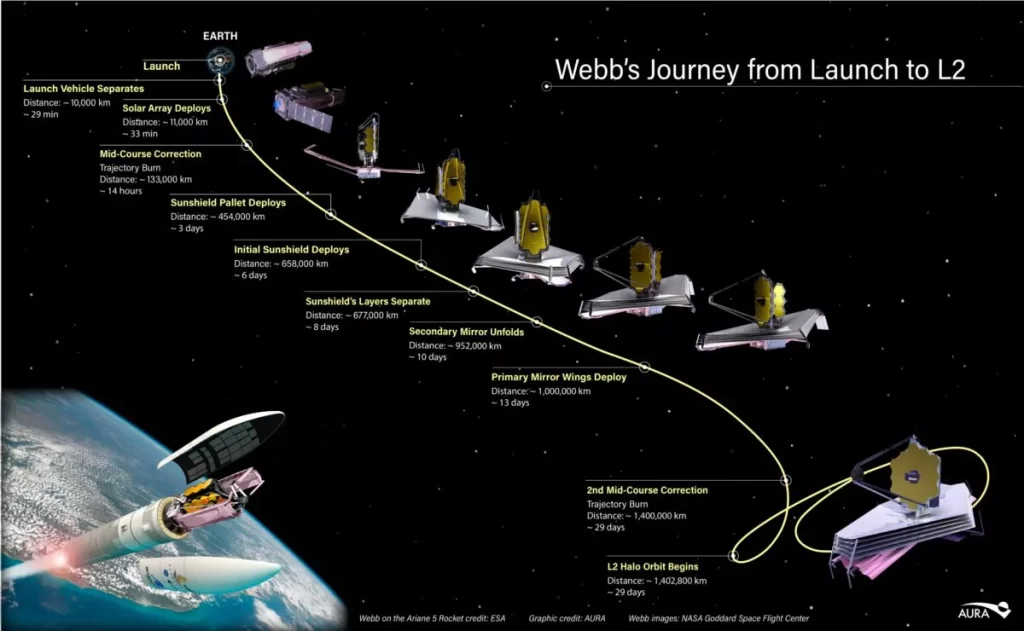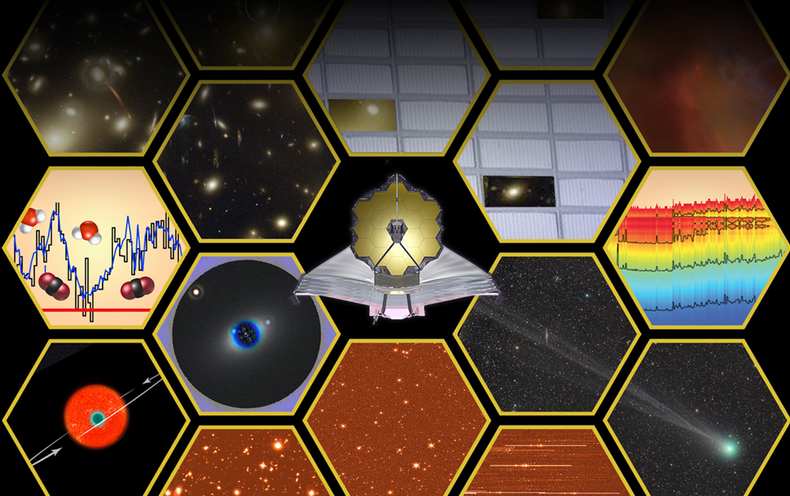What goes inside a star is rather a fascinating topic since the beginning of astronomy and that raises the complexity of looking at a little dot of light through the telescope and in order to get a better overview perspective in this genre and the prime mysteries hold in the formation of stars and galaxies in the universe.
Necessity is the mother of invention and thereby it gives a broad idea of developing a space telescope to get a better understanding and proper calibration about what atoms should do in the stars in most circumstances.
In the series of this venture, James Webb Space Telescope is right on a journey of lifetime and the world awaits for the first images from James Webb space telescope, which not only gives us the ability to see those parts of the stars and galaxies that are never known to us, but also gave us the opportunity to witness the greatest and biggest space mission worth $10 billion going in space.
Read: How can the James Webb Telescope see back in time?
What happens next for JWST?

Before knowing what happens next for JWST, a common question arises: Why is JWST going to a point so far away? This point in space – the Second Lagrangian point – is where, in the Earth-sun system, gravitational forces and a body’s orbital motion balance each other.
So a spacecraft can “hover” relatively easily at L2. It can stay near Earth, while both Earth and the spacecraft orbit the sun. In fact, the European Space Agency (ESA) has called L2 “a preeminent location for advanced space.
It is superficially beneficial for JWST then Hubble space Telescope as it goes under temperature changes every 90 minutes depending whether the satellite is right in front of the sun or in shadows.
JWST won’t undergo this same temperature-shifting effect, which has the potential to create distortions in the telescope’s ability to view the universe.
It will observe primarily infrared light coming from faint and very distant objects. To detect those faint signals, the telescope itself must be kept extremely cold: -370 F (about -220 C) or lower.
To suit that purpose, only it is equipped with a five-layer, tennis-court-sized sunshield, to protect the telescope from the heat of the sun and keep its instruments cold. That is also one of the fundamental reasons behind setting its course in L2 farther from sun then earth and moon, which ultimately helps in the process.
Also read: Will the James Webb Space Telescope see the Big Bang?
Brink of terror for 30 days

To invest $10 billion on a prototype with that much technological complexity and distance, was quite a task as the JWST is unfolding itself step by step. It is also giving rise to the uneasiness of all the scientists and they termed it as terror 30 as everybody is nervous about the progress that is going to take place within this period.
JWST is an advanced telescope with hundreds of moving parts which need to be unfolded correctly for proper working in this period of time. Accompanied by a giant mirror six times larger collecting surface, Hubble is carrying the hopes and dreams of all the scientists and astronomers and the wait for its fixation in L2 is what it is all about.
Also read: How far is the James Webb Space Telescope from Earth?
First images from JWST: A much needed outcome
According to NASA’S JWST crew, the first images from it can be expected and should be available by summer 2022 because JWST constitutes an infrared telescope which is basically designed to do spectroscopy unlike Hubble as it focuses within the visible light spectrum.
Being infrared, it is superficially beneficial as it provides a long sight which enables us to look farther in the universe, even if it has been done by any of the other missions.
NASA proudly gave a detailed description of the visualization power of JWST to look into the past in its sessions quoted as
“ Imagine all of the time, from the beginning of the universe until now, is represented on a year-long calendar. If right now is December 31 at 11:55 pm, Webb will be able to see all the way back to January 6th.”
In addition to that, JWST will observe the Ultra Deep Field in our first year of science operations. It’ll take less than a day to see deeper than Hubble saw in two weeks of staring. JWST is going to go much deeper, finding tens of thousands of galaxies that are too red and too faint for Hubble to detect.
While we were in awe and stunned by the visuals provided by the Hubble telescope that has shown us the ways of the universe for about a decade and now we are keen and ready to be blown more by its successor JWST.
In the end, it all comes to its safe travel to L2, which is a month-long procedure and thereby many are calling it the Brink of 30 days of terror.
Recent posts:
